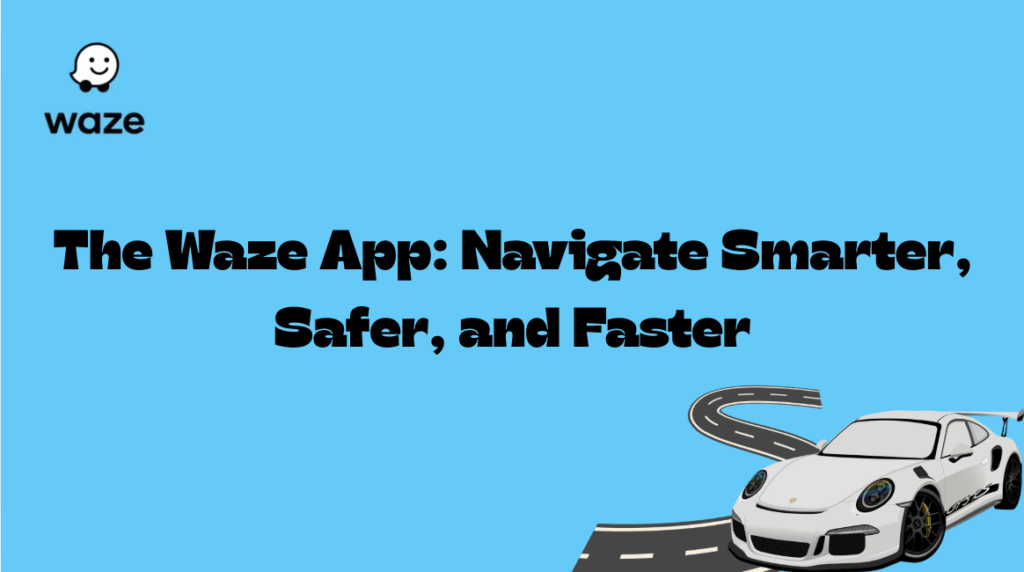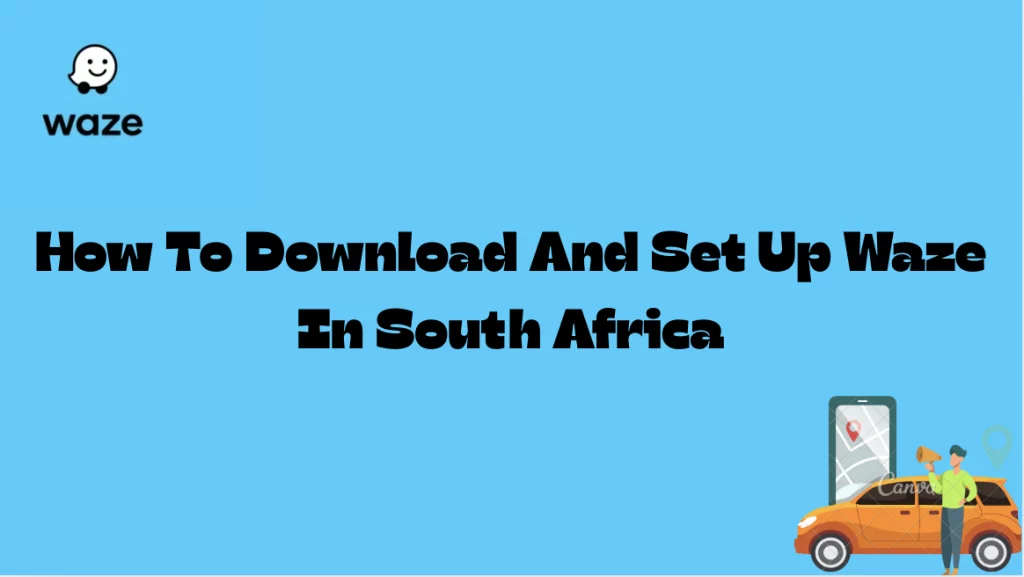Driving in South Africa can be an exciting yet unpredictable experience. From bustling city traffic in Johannesburg and Cape Town to winding rural roads in the Eastern Cape, getting around efficiently often requires more than just a basic GPS. This is where Waze, the community-driven navigation app, becomes a game-changer.
Waze not only provides real-time traffic data but also enables smart route optimization through user contributions, predictive analytics, and dynamic rerouting. Whether you’re a daily commuter, rideshare driver, delivery operator, or weekend road tripper, this guide will help you maximize your drive with Waze route optimization tips tailored to South African roads.
Why Waze is Ideal for South Africa
South Africa has a diverse range of road conditions, from smooth highways to gravel backroads. Traditional navigation apps may not offer the latest updates on:
- Roadworks and closures
- Traffic police roadblocks
- Accidents and hazards
- Informal taxi stops and minibus congestion
Waze fills this gap by crowdsourcing this real-time data, empowering drivers with better information to choose the fastest, safest, and most fuel-efficient routes.
Understanding Waze Route Optimization
Route optimization in Waze is not just about choosing the shortest distance — it’s about choosing the best route based on:
- Current traffic conditions
- Road closures
- Accidents or hazards
- Police presence
- Community reports
The app uses real-time and historical data to continuously recalculate and adjust your route as conditions change. This makes Waze particularly effective in busy urban centres like Durban, Pretoria, and Johannesburg.
Top Waze Route Optimization Tips for South African Drivers
1. Set Your Home and Work Locations
Setting these in your profile helps Waze automatically optimize your route during regular commuting hours. It considers:
- Peak-hour congestion on highways like the N1 or M1
- School zones and construction detours
2. Enable ‘Planned Drives’
This feature helps you know the best time to leave for your destination based on typical traffic patterns. Great for:
- Avoiding morning rush in Gauteng
- Timing your drive through high-traffic zones like Sandton or Umhlanga
3. Use Toll Road Preferences Wisely
South Africa has major toll roads such as the N3, N1, and N4. Waze allows you to:
- Avoid tolls if you prefer scenic routes
- Use them if speed is more important than savings
Navigate to: Settings > Navigation > Avoid toll roads
4. Leverage Voice Commands
South African roads often require both hands on the wheel. Use voice navigation to:
- Request alternative routes
- Add fuel stops or rest breaks
- Report traffic issues
Just say “OK Waze” followed by your command.
5. Sync Calendar and Contacts
Waze can pull addresses directly from your events and contacts — perfect for:
- Scheduling meetings in Johannesburg CBD
- Finding wedding venues in Stellenbosch
- Visiting tourist spots in Kruger National Park
Enable it in Settings > Calendar Events.
6. Use Real-Time Alerts
Set alerts for speed traps, potholes, heavy traffic, and more — especially useful on:
- R21 (known for strict traffic enforcement)
- N2 (frequent congestion near Durban)
You’ll be better prepared for sudden slowdowns or hazards.
7. Choose the Right Vehicle Type
In settings, you can choose between options like private car, motorbike, or taxi. This helps Waze offer more relevant routing based on:
- Access roads allowed
- Speed profiles
- Road condition preferences
8. Avoid High Crime Areas
While Waze doesn’t officially support crime zone warnings, some communities mark these locations with hazard tags or “danger zones.” Stay alert when rerouting through unfamiliar suburbs.
9. Join Local Waze Groups
Find community groups in Cape Town, Joburg, Durban and more — these groups contribute to more accurate road reports and localized advice.
Why Waze Beats Other Navigation Apps in South Africa
| Feature | Waze | Google Maps | Apple Maps |
|---|---|---|---|
| Community-Based Alerts | ✅ Yes | ❌ Limited | ❌ No |
| Live Police & Camera Alerts | ✅ Yes | ❌ No | ❌ No |
| Real-Time Rerouting | ✅ Instant | ✅ Slight Delay | ✅ With Lag |
| South African Road Coverage | ✅ Extensive | ✅ Good | ❌ Spotty |
| Load Shedding Alerts (via Wazers) | ✅ Occasionally | ❌ No | ❌ No |
Waze thrives in an unpredictable environment, making it perfect for South African roads impacted by load shedding, roadworks, and rapidly changing conditions.
Common Mistakes to Avoid
Even experienced Wazers can make errors that limit the app’s performance:
- Not allowing location access at all times — Waze can’t track changes in real time.
- Ignoring pop-up reroute suggestions — These are often the fastest options.
- Failing to confirm alerts — Weakens the reliability of community data.
- Over-customizing routes — Sometimes letting Waze take full control yields better results.
- Not updating the app — You’ll miss new features and local road rule updates.
Best Times to Use Waze in South Africa
Waze is effective all day, but it’s especially useful during:
- Morning rush (6:30 AM – 9:00 AM)
- Evening rush (4:00 PM – 6:30 PM)
- Load shedding periods when traffic lights are out
- Holidays and long weekends, when N1 and N3 routes get busy
Waze helps you identify road congestion before it happens — allowing better route planning.
Waze + Partnered Banks & Services
In South Africa, Waze has integrated with several local services:
- FNB and Standard Bank use Waze API in banking apps for ATM and branch location routing.
- Fuel partners like Shell often advertise fuel station routes and real-time prices via Waze ads.
Conclusion
From the scenic Garden Route to the bustling streets of Soweto, Waze is more than just a GPS app — it’s a driving companion that adapts to your journey. With real-time updates, crowdsourced reports, and dynamic rerouting, you can confidently navigate South Africa’s roads no matter where you are.
By applying the Waze route optimization tips discussed above, you’ll not only save time and fuel but also reduce stress and increase safety during your travels.
Download Waze today and let South Africa unfold before you — intelligently and efficiently.
Frequently Asked Questions (FAQs)
Q1: Is Waze legal in South Africa?
Yes, Waze is legal to use, but use it responsibly — ideally with voice commands or mounted on your dashboard.
Q2: Does Waze show speed cameras and police?
Yes, Wazers often report speed traps and law enforcement presence. Always drive within the speed limit.
Q3: Can I use Waze with limited mobile data?
Waze uses minimal data (around 0.5MB/hour) but needs an active connection to reroute effectively.
Q4: Does Waze help during load shedding?
Yes. Wazers often report traffic signal outages and blocked intersections, allowing safer and faster alternate routes.
Q5: Is Waze better than Google Maps for South African users?
If you’re focused on driving only, yes. Waze’s real-time, user-generated data provides better alerts and traffic avoidance in dynamic road conditions.


